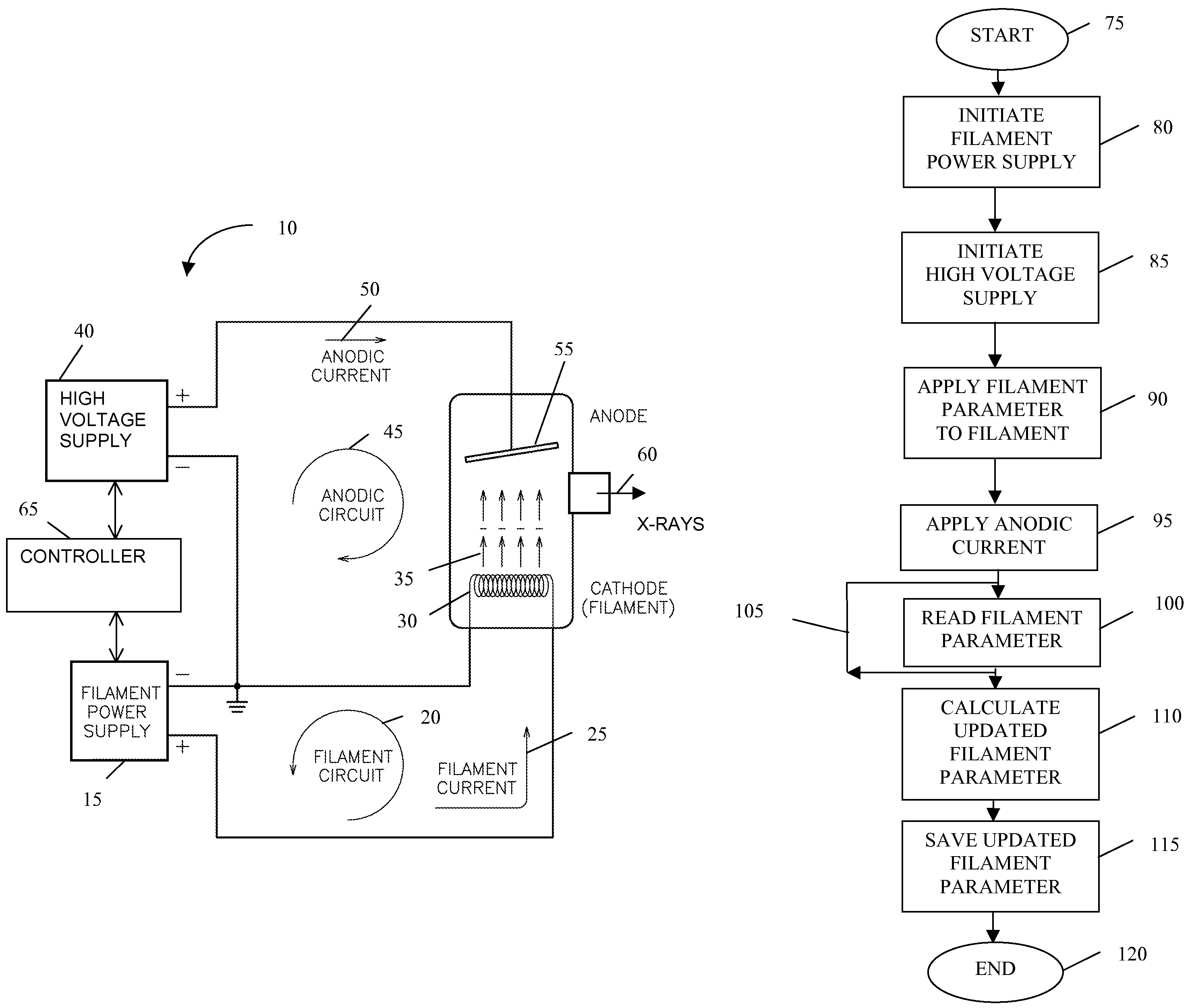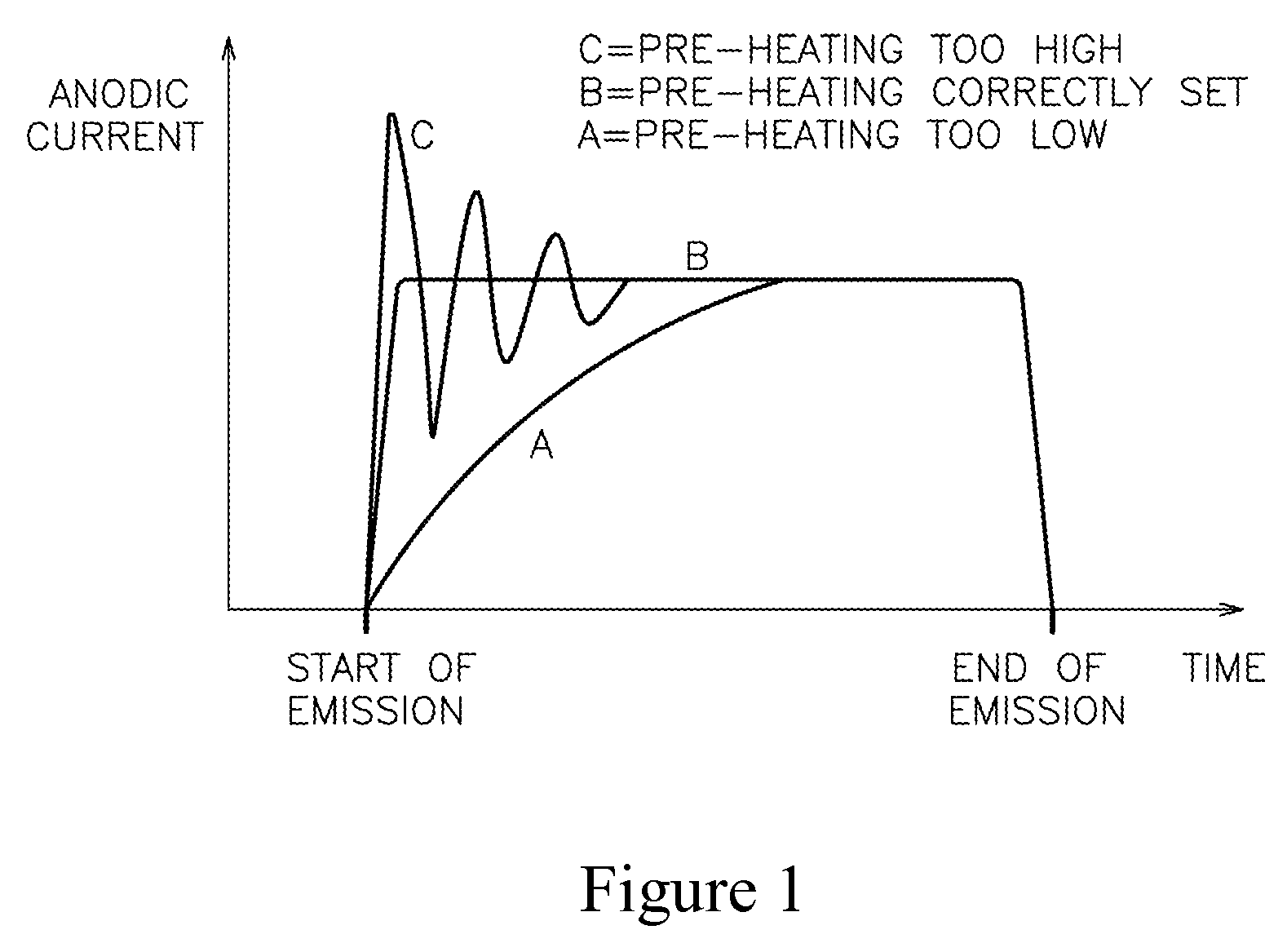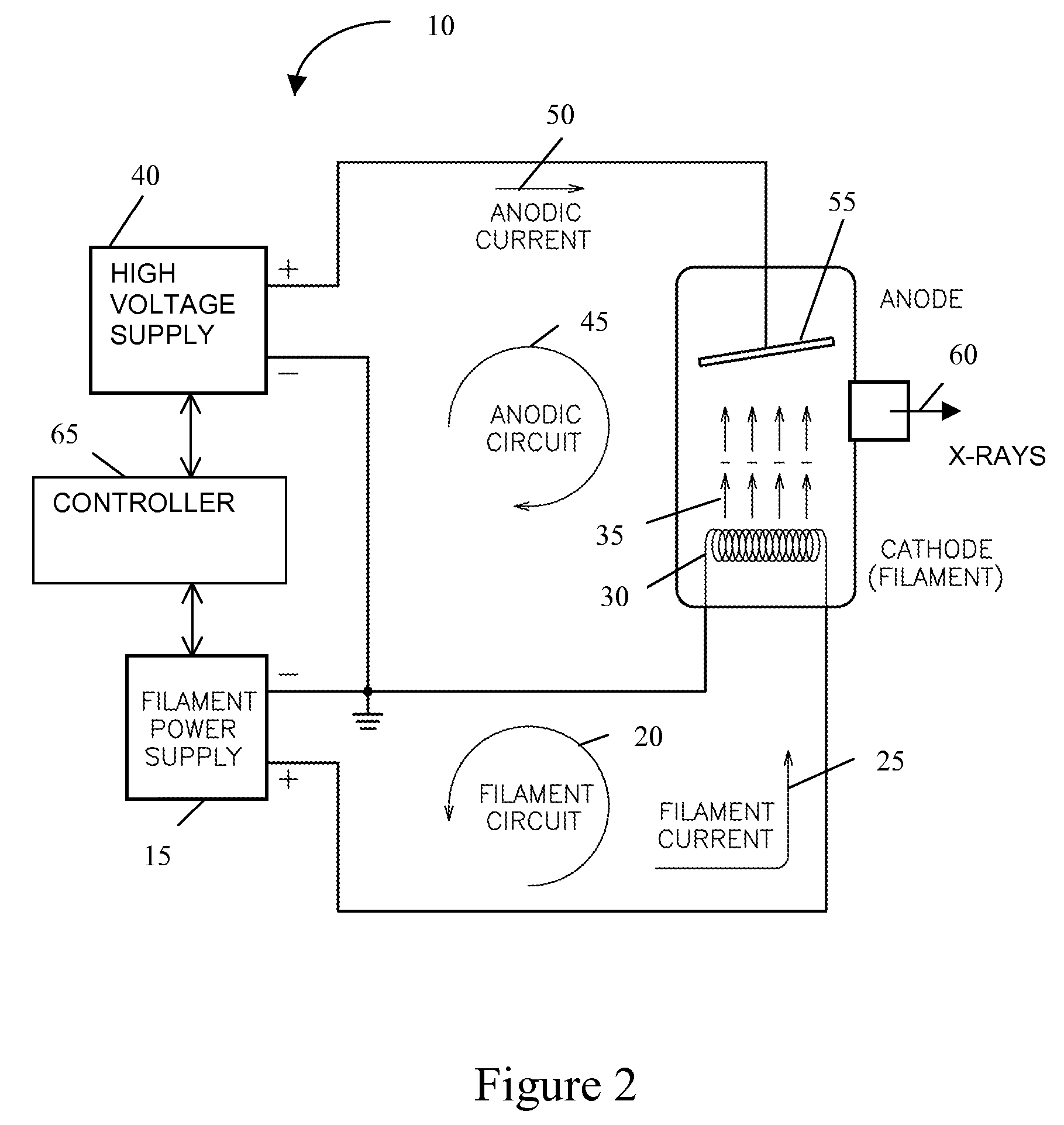Method to control anodic current in an x-ray source
a technology of anodic current and x-ray source, which is applied in the field of x-ray systems, can solve the problems of reducing the radiation dose to the patient, the most difficult to address, and the delay is undesirable,
- Summary
- Abstract
- Description
- Claims
- Application Information
AI Technical Summary
Benefits of technology
Problems solved by technology
Method used
Image
Examples
Embodiment Construction
[0025]One embodiment of a dental apparatus 10 of the present invention is depicted in FIG. 2. Preferably, the dental apparatus 10 includes a filament power supply 15 that is a part of a filament circuit 20 through which a filament current 25 flows for selectively generating sufficient thermal energy in a filament 30, which is an electrode, so that free electrons 35 are emitted from the filament 30. A high voltage supply 40 is part of an anodic circuit 45 through which an anodic current 50 flows for selectively generating a high voltage between the filament 30 and an anode 55, which is an electrode. Preferably, the cathode 30 and a portion of the filament circuit 20 are associated with the anodic circuit 45. Typically, the anodic current 50 is in the order of several milli-Amperes, and filament current 25 is in the order of a few Amperes, as required to impart sufficient power to heat the filament 30, causing the emission of the electrons 35.
[0026]The high voltage produced by the hig...
PUM
 Login to View More
Login to View More Abstract
Description
Claims
Application Information
 Login to View More
Login to View More - R&D
- Intellectual Property
- Life Sciences
- Materials
- Tech Scout
- Unparalleled Data Quality
- Higher Quality Content
- 60% Fewer Hallucinations
Browse by: Latest US Patents, China's latest patents, Technical Efficacy Thesaurus, Application Domain, Technology Topic, Popular Technical Reports.
© 2025 PatSnap. All rights reserved.Legal|Privacy policy|Modern Slavery Act Transparency Statement|Sitemap|About US| Contact US: help@patsnap.com



